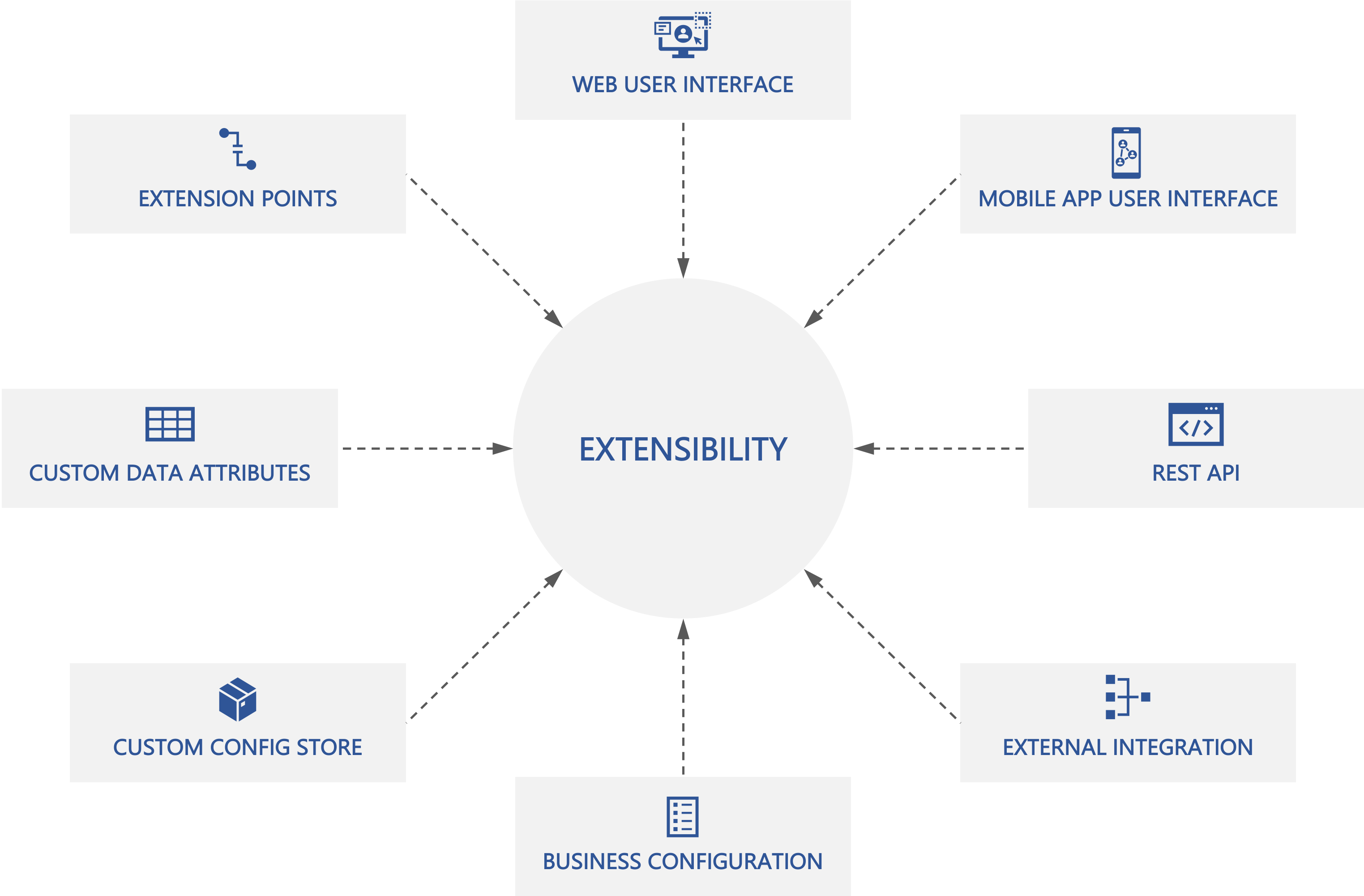Extensibility & Configurability
Introduction
Manhattan Active® Platform enables a comprehensive and flexible extensible model for customizing the business workflows, data models, user interface, and system behavior. Extensibility allows the Manhattan Professional Service team, and the customer to extend Manhattan Active® solutions without being impacted by (and without impacting) the base application upgrades or other maintenance activities carried out by the Manhattan Active® Operations. This document summarizes the set of extensibility methods available as part of the Manhattan Active® Platform:
Extensibility Methods
Manhattan Active® Platform supports a variety of extensibility methods as described below:

Custom Data Attributes is a mechanism in Manhattan Active® Platform for the customers to be able to introduce custom attributes as part of the base business objects. The custom data attributes can be added to virtually any base business objects. Once added, the custom attributes can be used just like the base data attributes: they can be used to create additional fields in the UI, be used for calculations in the business logic, be updated via the UI or through the REST API, or be part of the search queries, filters or business reports.
Extension Points: Manhattan Active® application components have built-in extension points for functional customizations. Call-outs to custom services can be configured at these extension points such that the custom services are invoked as part of a base workflow. The custom extension points are available throughout the base application functionality for a powerful extension model. Manhattan also evaluates the need for new extension points frequently and continues to insert them as part of application updates every few weeks. Extension points are designed to handle synchronous and asynchronous call-outs from the base flow, respectively.
User Interface Extensibility feature in Manhattan Active® Platform allows customization of the web (browser) and mobile app user interfaces by extending parts of the UI to introduce new data fields, to change the behavior of the UI functionality, or to add custom screens as part of existing UI workflows. Manhattan Active® Platform includes a built-in UI extensibility designer as part of ProActive tool-set that customers can use to extend the usability and look & feel of the UI without writing virtually any code.
REST API: Each Manhattan Active® Platform microservice publishes a REST API that handles virtually every business function and “CRUD” operations. Collectively, Manhattan Active® Platform exposes thousands of REST API endpoints which can be used as an instrument for integrating 3rd party systems with Manhattan Active® Platform. The REST API supports the same degree of access control that the Manhattan Active® Platform user interface provides. The REST API comes with Swagger documentation that outline the usage and references.
External Integration support in Manhattan Active® Platform allows customers to integrate the base application with external systems (3rd party or home-grown) in the customer’s IT landscape. The platform supports external integration for inbound and outbound traffic via HTTP (synchronous) and messaging (asynchronous) invocations. Inbound integration can be achieved either by invoking the platform REST API from an external system or by sending inbound messages via Google Cloud Pub/Sub. Likewise, Outbound integration can be instrumented by defining synchronous call-outs (user exits) to invoke external services via HTTP or by sending outbound events to external systems via Google Cloud Pub/Sub.
Business Configuration is a built-in mechanism in Manhattan Active® Platform to configure the hundreds of settings available to the customer to customize how the application behaves and operates. Business configurations can be done via the application’s user interface, or using the REST API exposed for the purpose. Examples of business configurations include:
- Authorization and access control configuration such as Users, Organizations, Roles, Grants,
- Business rules
- Business configuration such as Locations, Business Units, Stores, Schedules
- Payment configuration such as Payment Types, Parameters, Rules
- Batch job configuration such as Recurrence, Parameters, Schedules
- Message type configuration
Custom Config Store is a way to store custom configuration artifacts as part of the Manhattan Active® Platform such that they can be retrieved and referred to as part of other extensibility methods. The custom config store is also designed to handle encrypted artifacts including sensitive data such as 3rd party tokens or credentials, certificates, etc. that may need to be used for customizing the functional behavior of the application (for example, adding a new external integration to a payment system that requires an OAuth token for authorization). Data in the custom config store can be managed via its user interface, or by using its REST API. Data access of the custom config store is controlled by authorization and access control rules.
Learn More
Author
- Kartik Pandya: Vice President, Manhattan Active® Platform, R&D.
Feedback
Was this page helpful?